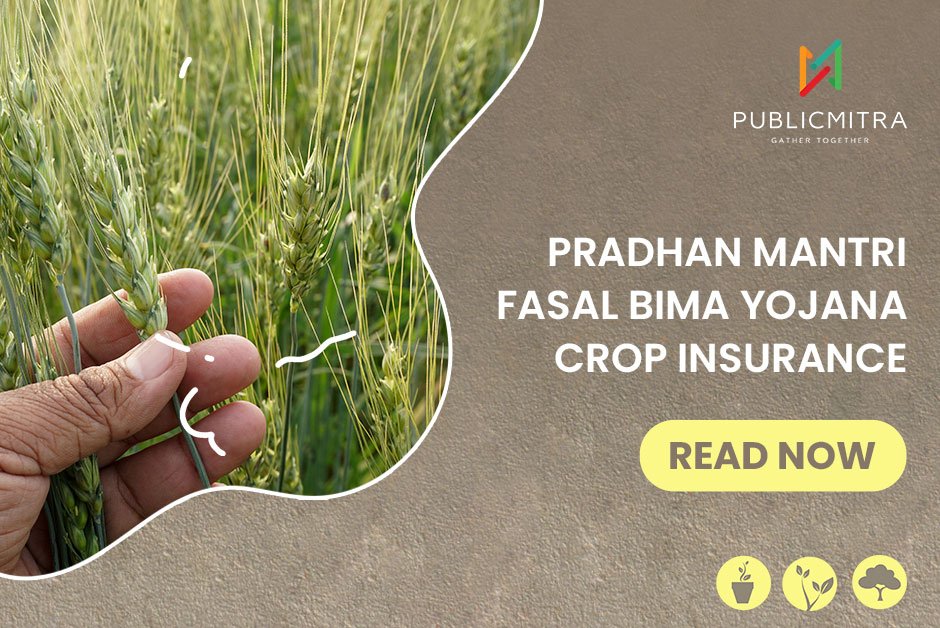The Backbone Of Our Nation Needs Support Too: Pradhan Mantri Fasal Bima Yojana Crop Insurance
For centuries, the farming sector has been the backbone of India’s economy. It is not only a source of income for farmers but the sector provides a range of employment opportunities to many people directly or indirectly. However, agriculture is prevalent with many uncertainties, like adverse weather patterns, natural calamities, pests, drought, and so on. To safeguard the interests of Indian farmers, the government has taken many steps, and crop insurance is one of them. Like a typical insurance plan, crop insurance provides damage coverage to farmers.
Let’s know something more about it.
Inception of Pradhan Mantri Fasal Bima Yojana (PMFBY)
Pradhan Mantri Fasal Bima Yojana scheme was launched in 2016 by PM Narendra Modi’s cabinet. The motto of the scheme is – ‘One Nation, One Crop, One Premium’ and it strives to provide affordable crop insurance to Indian farmers.
The objective of the PMFBY scheme
- Expand crop insurance penetration in India with the main purpose to cover the total sown area in the country.
- Reduce the financial loss of crop failure
- Stabilize farmer income.
- Encourage farmers to adopt and invest in better farming practices
- Ensure credit flow to the agriculture sector
- Make crop insurance affordable and available to every farmer
- Protect farmers from uncertain production risks
Pradhan Mantri Fasal Bima Yojana scheme coverage
The following risks and crop losses are covered under the scheme for Standing Crops (sowing to harvesting):
- Comprehensive risk insurance – Cover yield on losses due to non-preventable risks, like drought, flood, dry spell, pest attack, fire, landslide, storm, cyclone, hailstorm, and lightning.
- Add-on coverage – In addition to the mandatory basic product, state government, and Union Territories may choose (in consultation with the State Level Coordination Committee on Crop Insurance) any or all add-on covers:
- Planting risk or prevented sowing – Germination failure due to adverse weather conditions or deficit rainfall. In such a risk, the lump sum payout will be 25% of the sum insured and the coverage will be terminated.
- Midseason loss – Losses like floods, prolonged dry spells, and drought which cause less than 50% of normal yield.
- Post-harvest losses – Coverage is given up to a maximum period of 14 days from harvesting. It covers crops that are required to be harvested against adverse conditions.
- Localized calamities – Loss of crops due to identified localized risks in isolated affected areas.
Premium
There is a uniform premium of only 2% to be paid by farmers for the Kharif crop and 1.5% for the Rabi crop.
For annual commercial and horticultural crops, only 5% premium to be paid by farmers.
The balance premium is paid by the government (Central as well as State government in collaboration) to offer the full insured amount to the farmers against crop losses.
Significance of Pradhan Mantri Fasal Bima Yojana
PMFBY is the largest crop insurance scheme of Independent India. It is notable to mention that globally, it is the third largest scheme in terms of premium and number one scheme in terms of farmer application enrolled. Farmers need financial security and crop insurance is one such step to provide them with that safety net. Crop insurance brings great relief to all Indian farmers and provides them the much-needed income stability they deserve.
Do you know a farmer who might need this? Do share this article with them. Want to know more about crop insurance? Follow our page where we regularly post articles on a wide range of subjects.











